If you’ve been considering raising backyard chickens for a while now, hopefully, your only qualms are about how to build a chicken coop or what exactly you should feed your birds.
These concerns are easy to resolve, and you’ll find plenty of information online about how to do both.
Ask anybody how to deal with an aggressive or mean chicken, however, and you’ll likely be met with silence or, in the very best-case scenario, a lot of contradictory information.
However, you don’t need to put off raising chickens because you aren’t sure what they will be like to interact with – nor do you need to run screaming away from your mean rooster every time you enter the chicken run.
There are plenty of friendly pet chicken breeds out there for you to consider as you build a docile, fun-loving flock of backyard chickens.
What Makes a Chicken Breed A Good Pet?
Not all chicken breeds are made the same, so while it’s important that you consider the egg and/or meat output of your breed, it’s important that you also consider its disposition.
For example, think about how your chicken breed of choice will interact with other members of the flock – as well as chickens of other breeds.
Chickens all conform to something called the pecking order, which is just a hierarchy of power into which each chicken falls.
Ideally, a friendly pet chicken will not only be docile around other chickens but will have the courage to stand up for itself if it is being bullied – this can prevent it from becoming injured by other more aggressive members of the flock.
Individual chicken breeds are also known for their unique personalities. While some breeds are sweet and gentle, others are loud and flighty.
Noise doesn’t always necessarily correlate with personality, but often, the quietest chicken breeds are some of the most friendly.
Broodiness and mothering ability also comes into play when you are looking for the most friendly chicken breed.
Chickens who have a tendency to go broody can sometimes be more aggressive, as they will become more standoffish as they attempt to hatch their own eggs.
That being said, some of the broodiest chicken breeds are also the best mothers, so this may be a trade-off you want to make.
Finally, if you plan on raising a friendly chicken breed as a pet, you will want to consider how easy it is to train.
Although intelligence can sometimes correlate with aggression and flightiness, that doesn’t have to be the case.
Some of the smartest chicken breeds are also quite friendly, meaning you can easily train a chicken to be a lap chicken of your own!
The 16 Friendliest Pet Chicken Breeds
Now that you know what to look for in a friendly pet chicken, here are some of the most popular friendly chicken breeds.
And don’t forget – just because a chicken has a great personality, doesn’t mean you need to sacrifice on your “wishlist” in other departments.
There are plenty of friendly chickens that are also great egg layers and meat producers, too.
1. Plymouth Rock
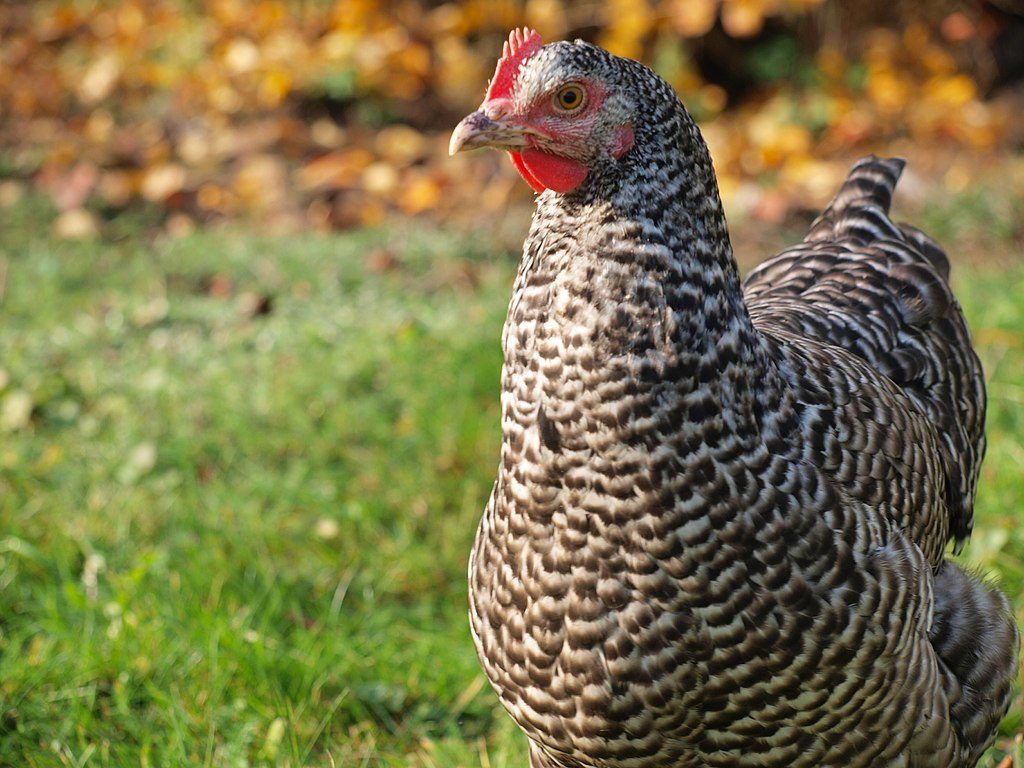
Plymouth Rocks are some of the most popular dual-purpose chicken breeds around.
A heritage breed, the Plymouth Rock chicken comes in several variations, including barred, blue, buff, silver penciled, white, black, buff, blue, and black frizzle.
No matter which color you select, these chickens are excellent layers, producing about 280 eggs (usually in a pink-brown shade) each year.
These birds are calm and enjoy being allowed to free-range. They are also quite hardy to the elements.
Plymouth Rocks are easy to find, which is great news – they’re one of the friendliest chicken breeds you’ll find and one you’ll definitely want to consider adding to your backyard flock.
2. Buff Orpington
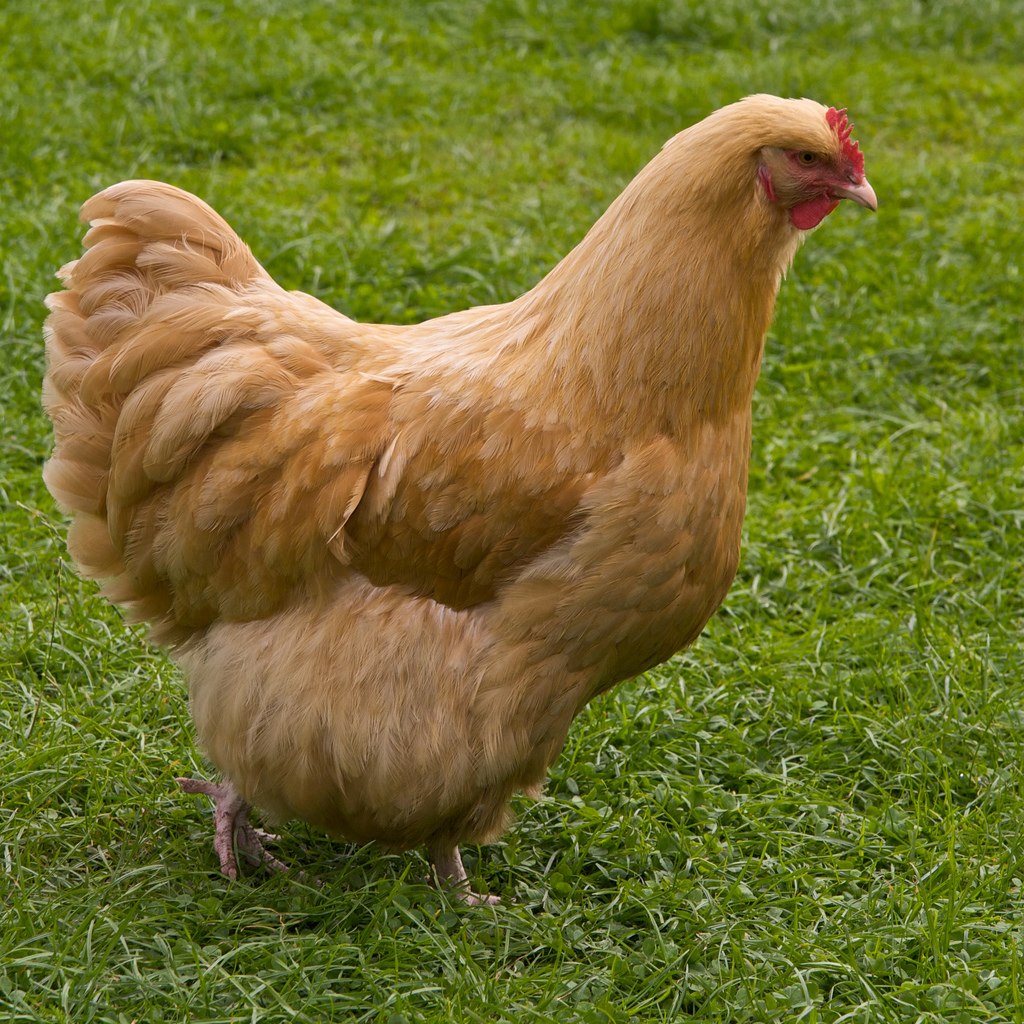
There are a ton of varieties of Orpington chickens, but the Buff Orpington chicken tends to be one of the easiest to come by.
A dual-purpose breed, the Orpington breed comes in other colors, too, including lavender, blue, black, buff, and white.
Regardless of the variation, these chickens produce about 200 pale brown eggs each year.
Not only are these fluffy birds great egg producers, but they are also excellent pets.
Orpingtons have friendly dispositions that make them great options for people seeking low-maintenance flocks.
3. Australorp
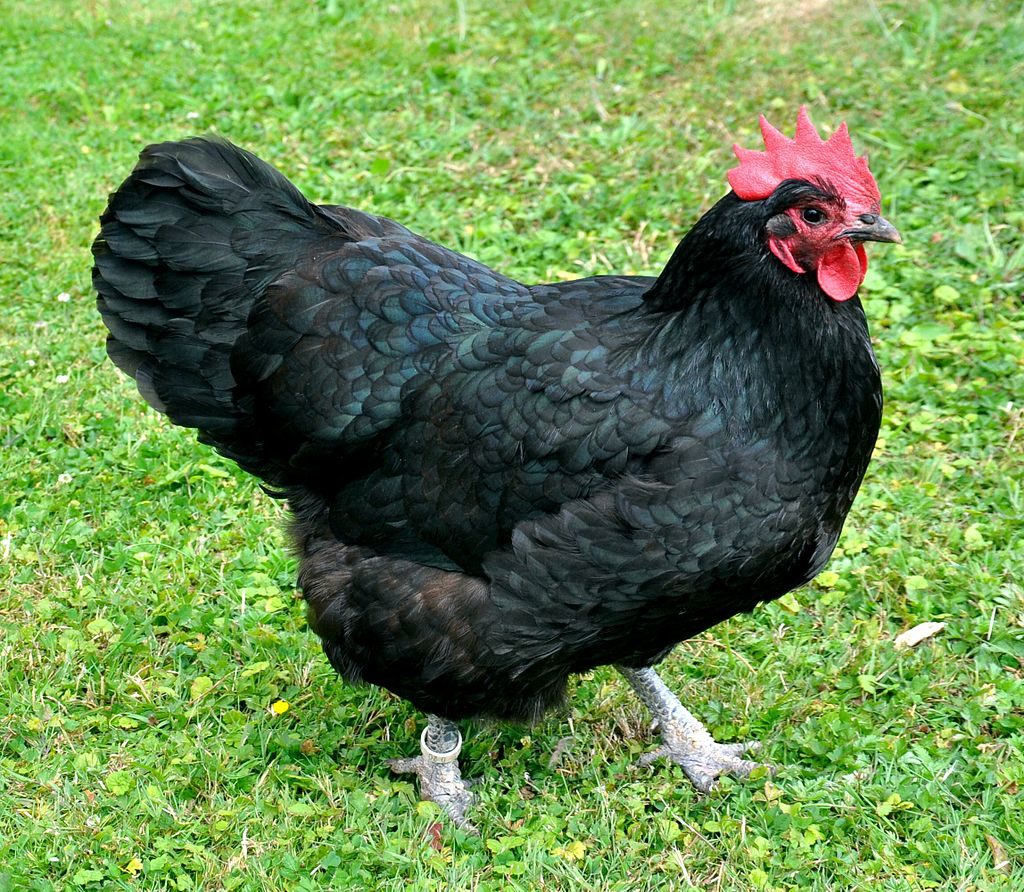
Australorp chickens are great dual-purpose breeds.
They can be raised for both eggs and meat. Native to Australia, they do well in just about any type of climate.
They are excellent layers that produce about 250 brown eggs each year.
Available in black, blue, or white, these chickens are good foragers, too.
You can’t go wrong with the popular Australorp, especially when you consider that it’s one of the most friendly and docile chicken breeds around.
4. Cochin
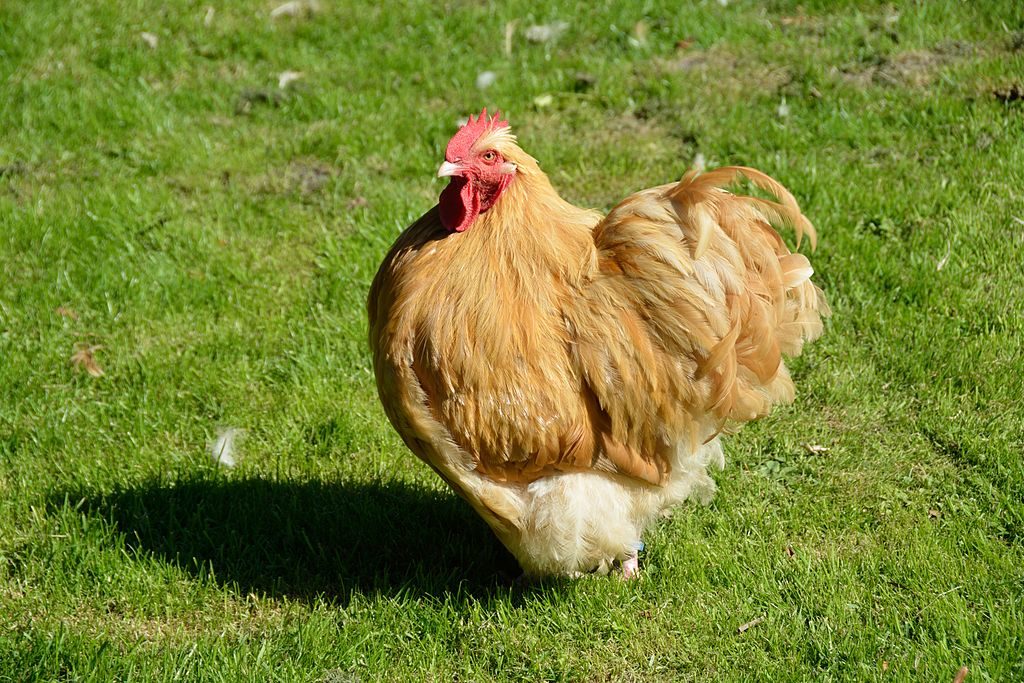
The Cochin chicken is not only one of the largest chicken breeds, but it’s also one of the friendliest chicken breeds you can raise, too.
This fluffy, mellow bird is also quite cuddly. It enjoys lap time and is very easy to tame and to handle. A quiet chicken, Cochin is also a decent layer, producing about three eggs each week.
Cochin chickens are also prized for their mothering abilities. Hens often go broody, and they do a good job of caring for their young.
That being said, these chickens aren’t the best for raising in hot climates, as they have lots of fluff that can cause them to overheat during the worst parts of summer.
5. Brahma
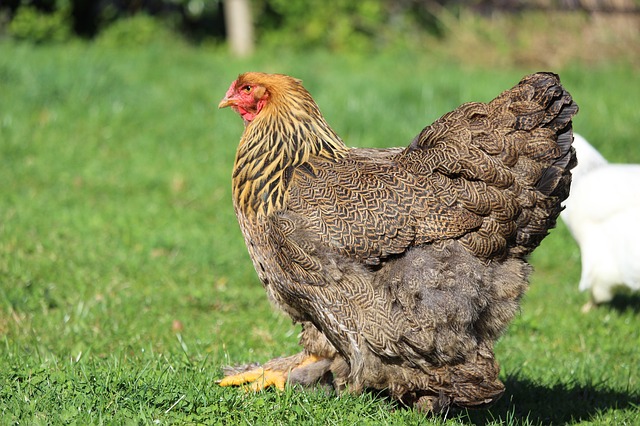
The Brahma chicken is not only one of the most massive chicken breeds out there, but it’s also a great chicken for people seeking a friendly, cold-hardy breed.
This breed does well in cold, damp environments despite the fact that it has heavily feathered feet.
Brahma chickens produce about 150 eggs each year. So while they aren’t great for egg production, these chickens are excellent when raised for meat.
Brahma chickens also make popular pets, particularly if you live in a northern climate.
6. Polish
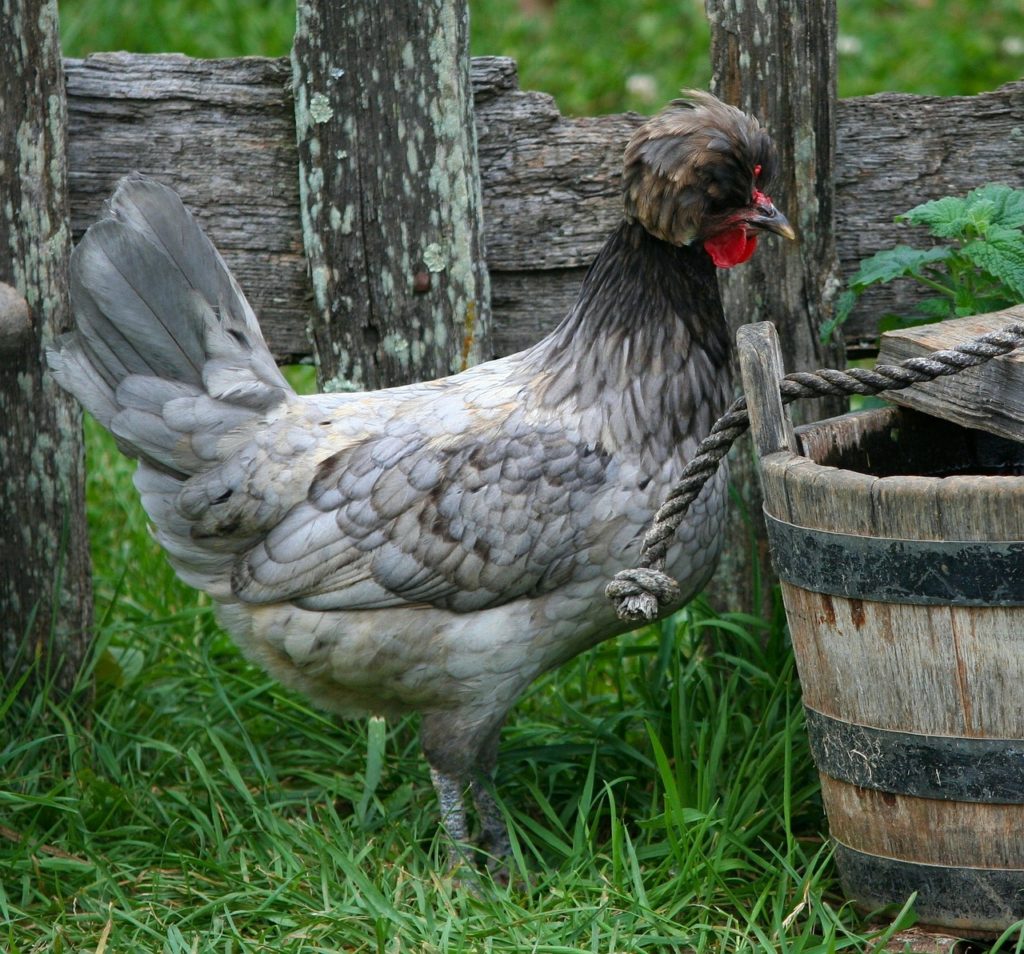
Polish chickens are gaining popularity as backyard chicken breeds, largely because they have a bizarre appearance that is prized by new chicken keepers.
Chickens of this breed have feathered crests that can sometimes obscure their vision, making them a bit nervous around people.
However, once you trim the crest back, your chickens will not only be able to see better but will also be less nervous around you.
Polish chickens do great in confinement. They are curious birds, so an indoor environment is recommended to keep these inquisitive chickens out of trouble.
A docile, tame, and friendly bird, this chicken enjoys being handled – and it especially loves to cuddle!
The Polish chicken hen is also a good egg layer, producing about four eggs each week.
7. Faverolle
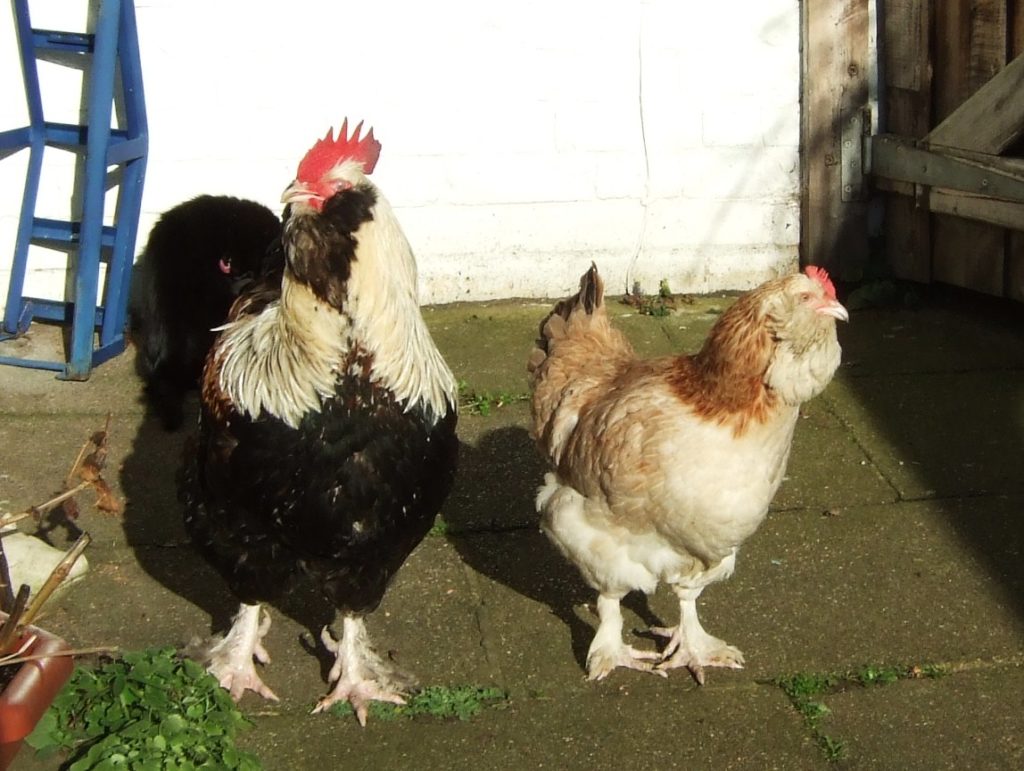
A unique French chicken breed, this bird stands out as it has five toes instead of the standard four.
This chicken also has fluffy cheek feathers (formally referred to as muffs) and a fully feathered beard.
Faverolles come in many colors, but the most popular is salmon. They do well in confinement and are also incredibly docile.
They are easy to teach and to tame, making the breed a good choice if you have small children.
You’ll also receive an impressive four eggs or so each week from your hens.
8. Easter Egger
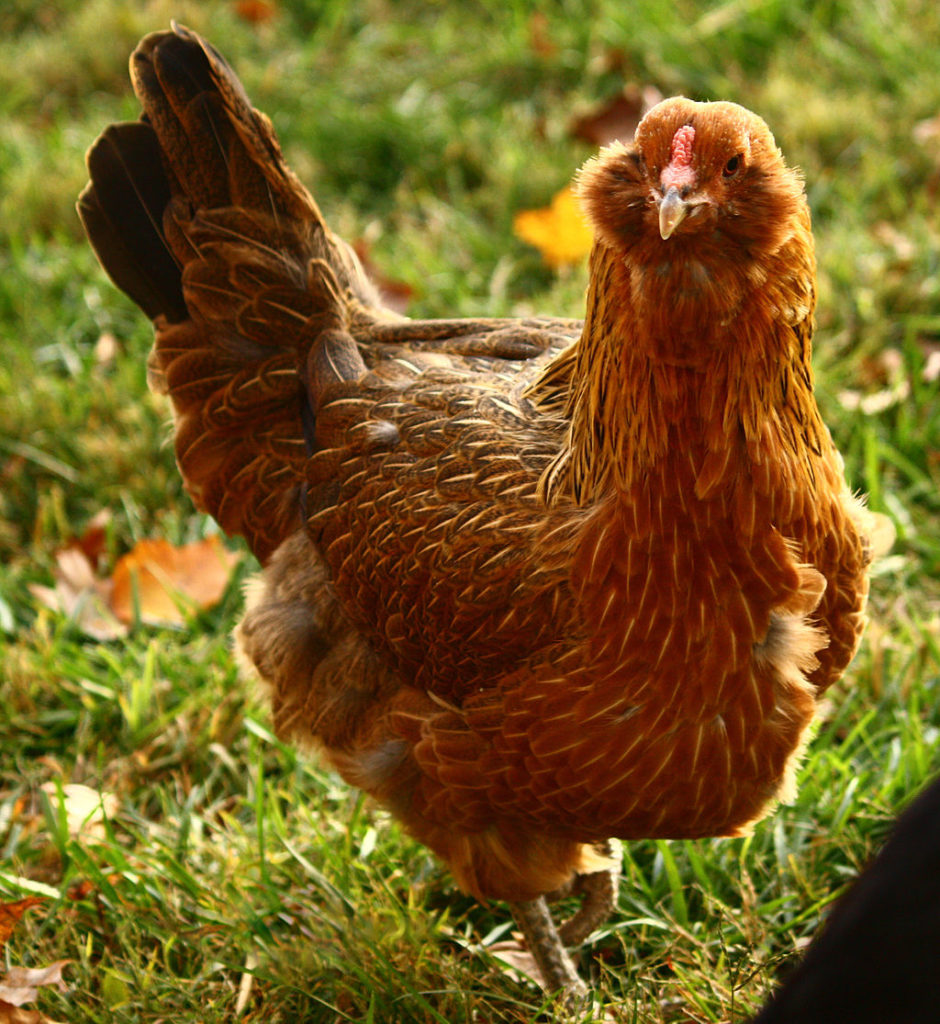
The Easter Egger chicken is not technically a recognized breed.
However, any chicken that lay colored eggs and doesn’t conform to breed standards for Ameraucana or Araucana chickens can be considered an Easter Egger.
Easter Eggers are prized for their ability to produce blue, green, and pink eggs.
They are charming and colorful themselves, too, and although they vary widely in appearance, they don’t vary quite as much in regards to their dispositions.
These birds have a tendency to be quite friendly and docile – they’re also relatively easy to train.
9. Bantam Silkie
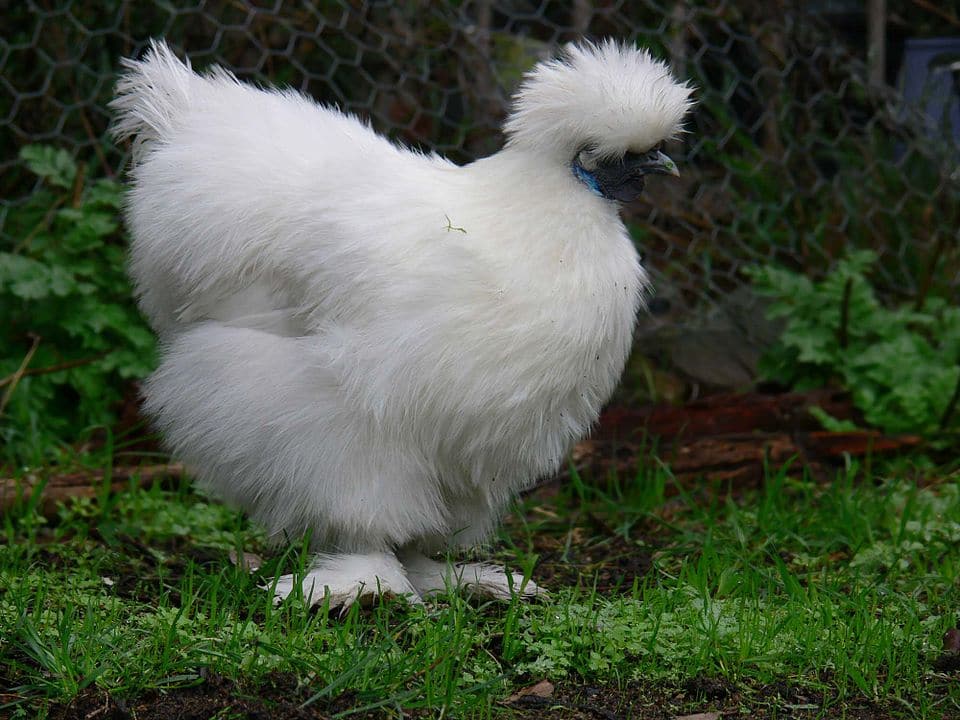
Silkie chickens of any kind are popular choices for backyard flocks, but bantam birds tend to be the most popular.
They are so tiny (often less than a pound or two!) that they are incredibly easy to handle.
Silkies can be bearded or non-bearded, but they come in a variety of plumages.
They have silky feathers that are more like puff balls than actual feathers, and they even have feathered legs.
Silkie chickens also have blue earlobes, black skin, and black bones. Interestingly, Silkies have five toes per foot.
Silkies are friendly, sweet, calm, and docile. Hens are extremely quiet, and while these chickens are extremely fluffy, they don’t fly well.
You will need to provide them with low perches or even with dog beds in which to sleep.
They need to be kept out of inclement weather, too, since their feathers aren’t like those of other chickens.
That being said, the Silkie chicken is a great choice if you want a pet chicken, as it is not only friendly, but it loves to be cuddled and snuggled.
10. Wyandotte
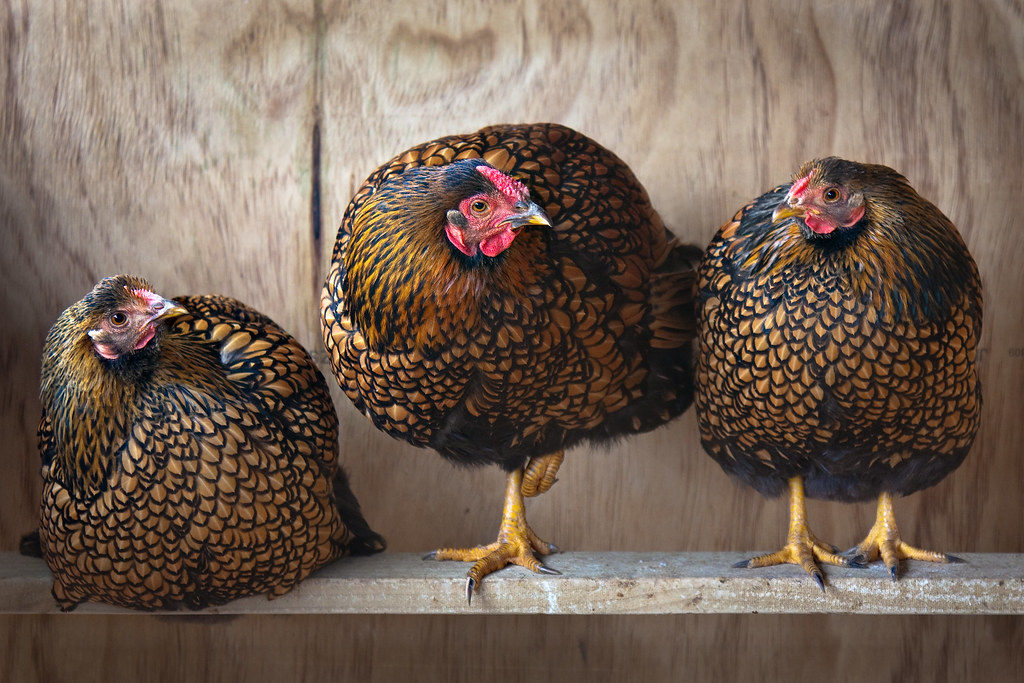
Wyandotte chickens are frequently raised in backyard flocks because they are beautiful to look at – but they are also prized for their calm, sweet demeanor.
A docile chicken breed that is also easy to train, these birds are prolific layers, producing about 200 brown eggs each year.
Wyandotte chickens can also be raised for meat, however. These chickens come in many colors, including laced color varieties like blue, gold, and silver.
11. Sussex
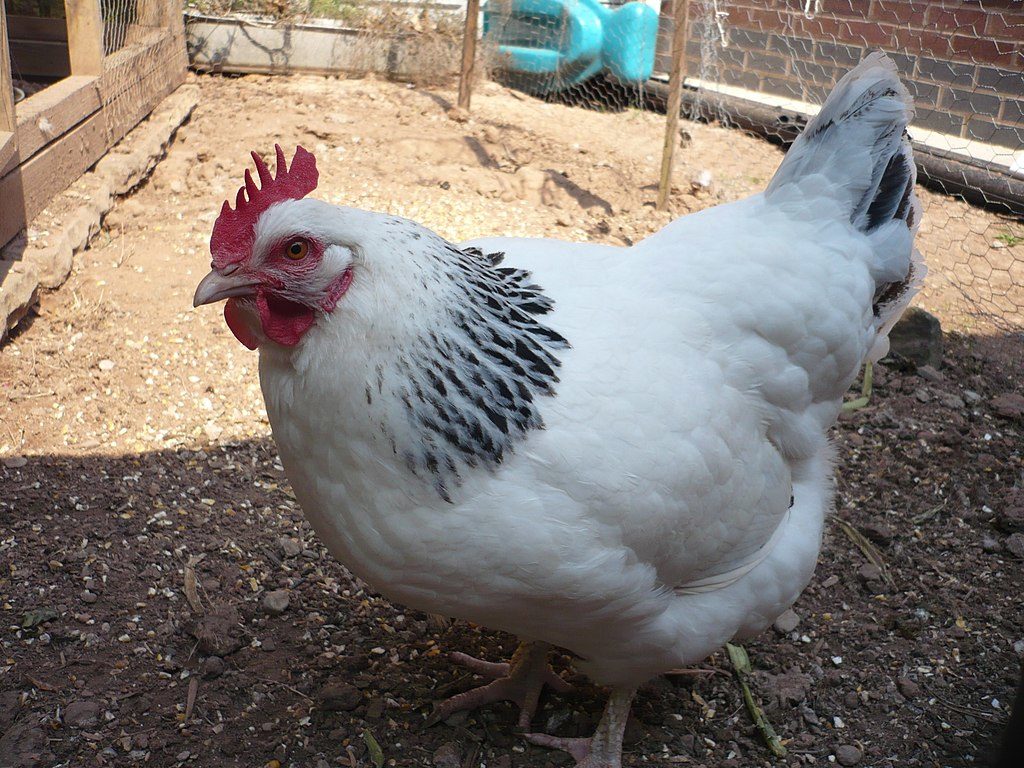
The Sussex chicken is another dual-purpose breed that lays about 250 eggs each year.
This bird is incredibly inquisitive – yet also overwhelmingly sweet and delicate.
Speckled Sussex chickens are the most popular in the United States, but you can also find them in shades of brown, buff, light, buff, white, silver, coronation, red, and buff Columbian.
12. Jersey Giant
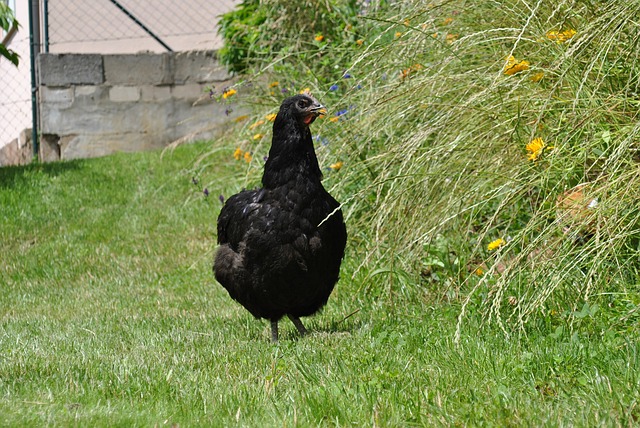
Jersey Giants are some of the largest chicken breeds out there, and while the formal name is Jersey Giant, we think this chicken breed should be renamed to “Gentle Giant.”
Jersey Giants chickens are super friendly and quite calm and docile, too.
An excellent pick for a beginner flock, this chicken lays about 260 eggs each year.
They are dual-purpose birds, however, and can also be raised for meat or exhibition.
13. White Leghorn
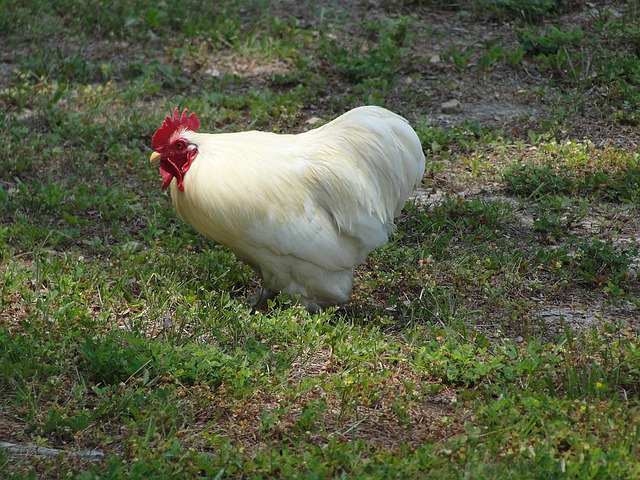
The White Leghorn is a productive chicken that can produce about 280 white eggs each year.
The most common chicken breed in commercial egg productions, this bird can be flighty. It is not necessarily a calm, relaxed chicken breed, but since it is so intelligent, it is easy to train.
The White Leghorn does best in warm climates due to its small body and large comb.
14. Black or Red Star
Star chickens are also known as sex-links. These birds aren’t necessarily formally recognized breeds but instead are popular productive hybrids.
Star chicks can be sexed at hatching time, making it easy for you to tell whether you are getting a hen or rooster – and thereby eliminating the likelihood of gender-related aggression in your flock.
Sex link chickens lay about 260 brown eggs each year.
These birds are calm and docile – and an excellent breed of chicken for beginners and more experienced flock owners.
15. Sultan
Sultans are exotic chickens that make excellent pets. These chickens originated as court birds for the Sultans of the Ottoman empire.
This bird rarely scratched at the imperial gardens and today is raised for similar purposes.
This ornamental breed is not a great egg layer, producing only a couple of eggs each year. However, these white chickens have beautiful appearances with large, puffy crests and vulture hocks.
They have low wings and plenty of leg feathering, making them a beautiful addition to your backyard flock.
Best of all, Sultan chickens are docile and calm. They enjoy being around humans and do well in confinement.
They are easy to handle and while they aren’t well-suited to cold environments, they can easily be raised indoors, too.
16. Barbu D’Uccles
Barbu D’Uccles are native to Belgium, specifically from the area near Uccle.
These chickens were developed in the 1900s and are bantam chickens. They are small, docile, and incredibly sweet.
This breed can be found in multiple color combinations, including mottled black, porcelain, and mille fleur.
These chickens have feathered muffs and beards, making them eye-catching additions to your friendly flock.
These happy birds are quite chatty – yet they also enjoy human interaction.
Barbu D’Uccles are known for their proclivity toward perching on the head and shoulders of their owners, as well as for their enjoyment of being held and cuddled.
A calm, curious breed, the Barbu D’Uccle is known to occasionally fly but also does well in confinement. These chickens occasionally go broody and are great mothers, too.
What is the Meanest Chicken Breed?
You’ll hear a ton of opinions from various backyard chicken owners, band to be fair, the disposition of a chicken has more to do with its unique personality and environment than it does with its specific breed or genetics.
That being said, the Silver Laced Serama is widely regarded as the most aggressive breed of chicken.
Hens can become extremely cranky when they are broody and their nests are disturbed, while roosters are generally quite ornery in the first year of their lives (when their bodies are surging with hormones) as well as in the early spring.
Can You Train a Chicken to Be Friendlier?
Aggression in chickens can be caused by a variety of factors, including those that are genetic (related to breed), hormonal, behaviorally reinforced, or instinctive.
Some breeds are naturally more aggressive, while others will be friendly or better at other things – like foraging.
Naturally, however, within a breed there will always be variations.
In general, bantam chickens tend to be more friendly, but that’s not always true.
Similarly, roosters, too, tend to be more aggressive than hens, but again, in every flock, there tends to be at least one ornery hen.
Aggressive chickens often adopt behaviors that we as humans view as mean or not friendly – such as attacking people, animals, or even other chickens.
They may peck your hand as you try to feed them, or they may chase other chickens around the yard.
The chicken itself does not view these behaviors as mean – after all, a chicken doesn’t know the difference.
However, there are some ways you can encourage your chickens to be friendlier, even if you don’t have one of the friendliest chicken breeds we already mentioned.
For example, convincing the chickens that you are an alpha chicken can be quite beneficial. To do this, you should avoid backing down from a chicken that is showing signs of aggression.
Remain on guard if you have a more aggressive chicken, but don’t turn away.
Stand as tall as possible and if you can, avoid using a boot or stick as a protection measure – chickens often view these measures as threats.
Instead, at the first sign of dominance, establish yourself at the top of the pecking order by grabbing the aggressive chicken by the feet and turning it upside down. Then, tuck it under your arm like a football.
Hold it for about a minute until it recognizes your dominance. You may need to repeat this process several times.
Selecting the Best Chicken Breed for Your Family
Chickens have been rapidly growing in popularity as one of the most beloved homestead pets.
These animals not only allow you to contribute to a more natural lifestyle, but they can also be raised as tame, friendly members of the family, too.
When you’re looking for the best breed of chicken for your family, consider some of these friendliest pet chicken breeds – not only will they be easier to tame, but they’ll also provide you with an endless supply of tasty farm-fresh eggs.
Who knew chickens could be so interesting! Will the hens lay eggs if we forgo a rooster?